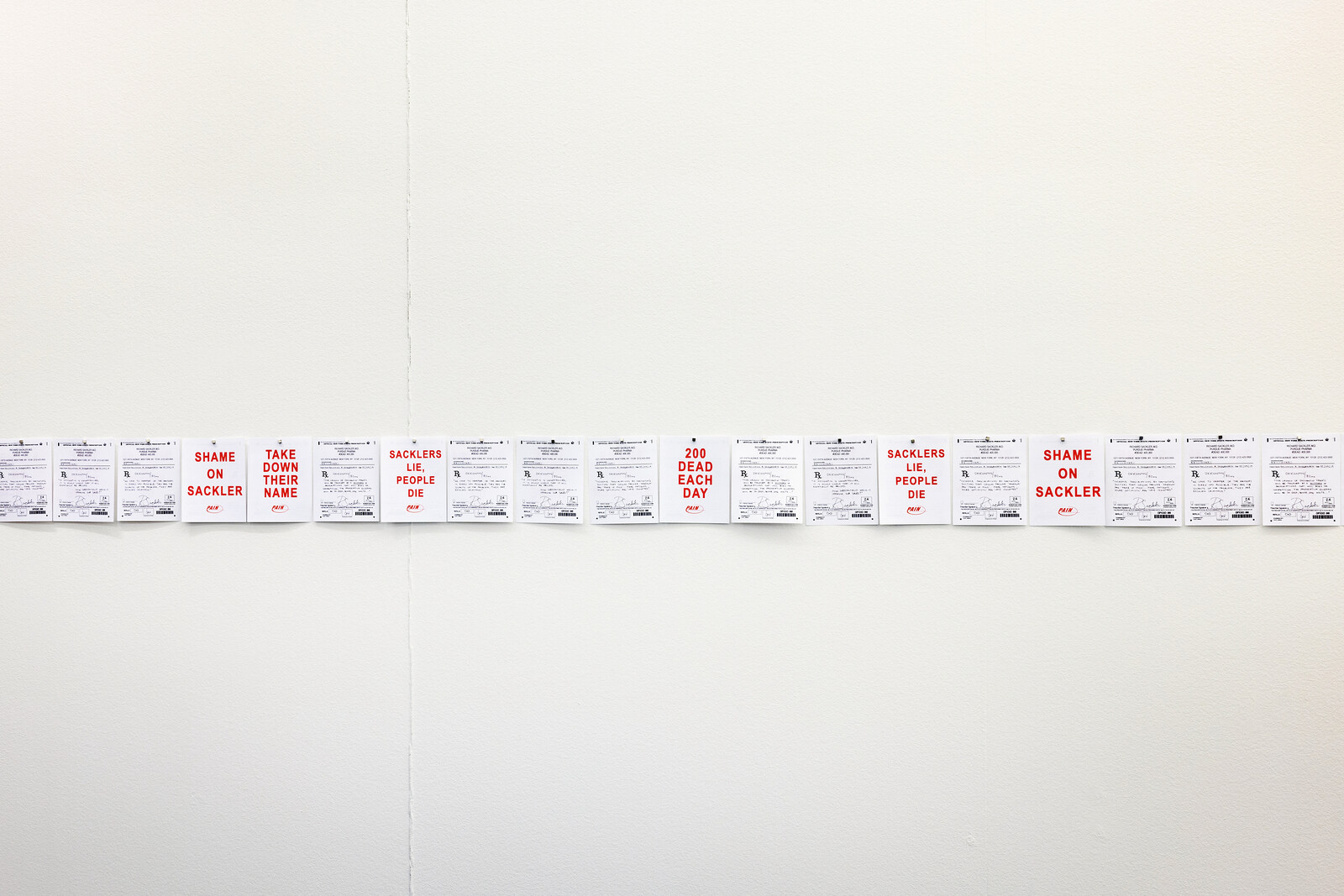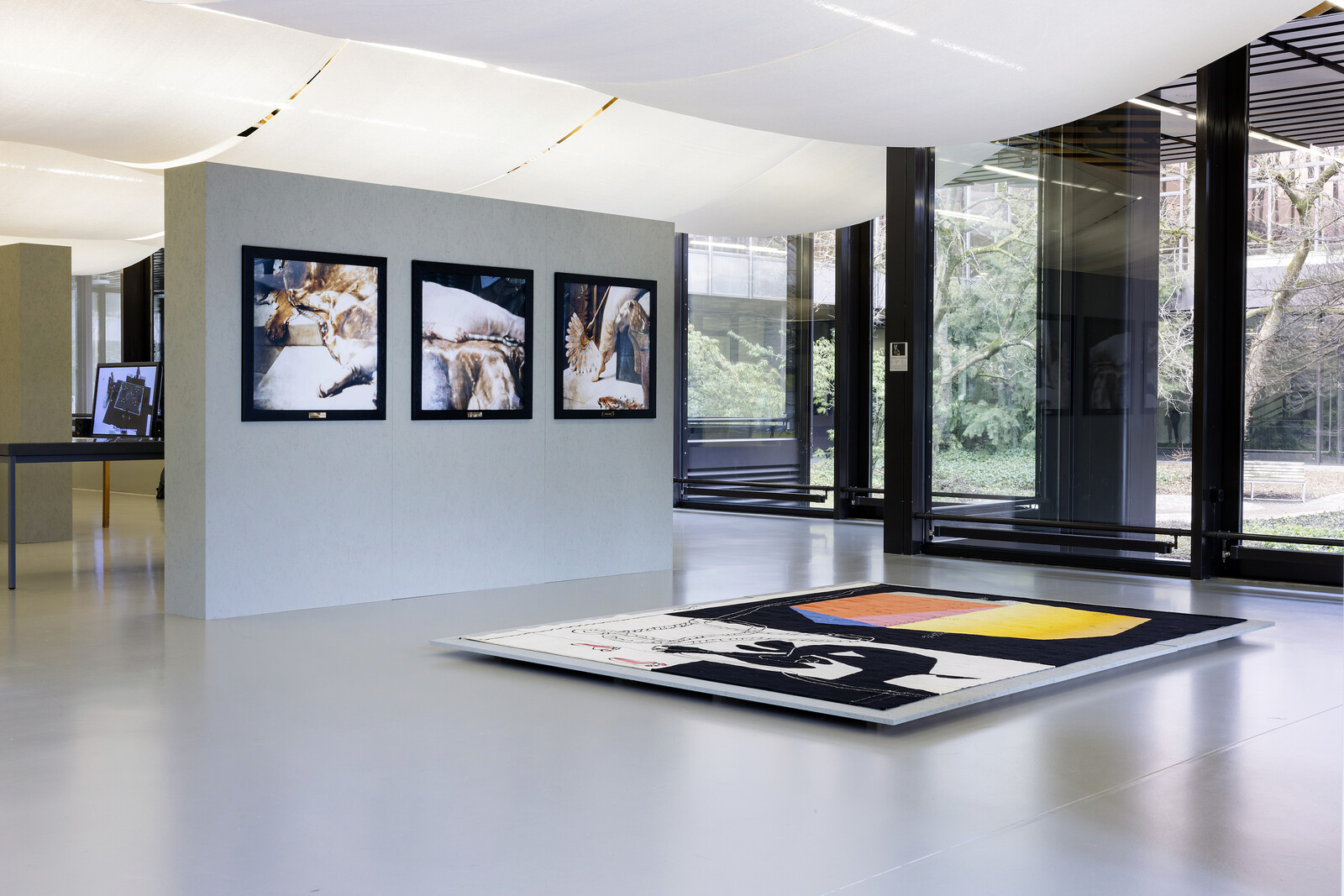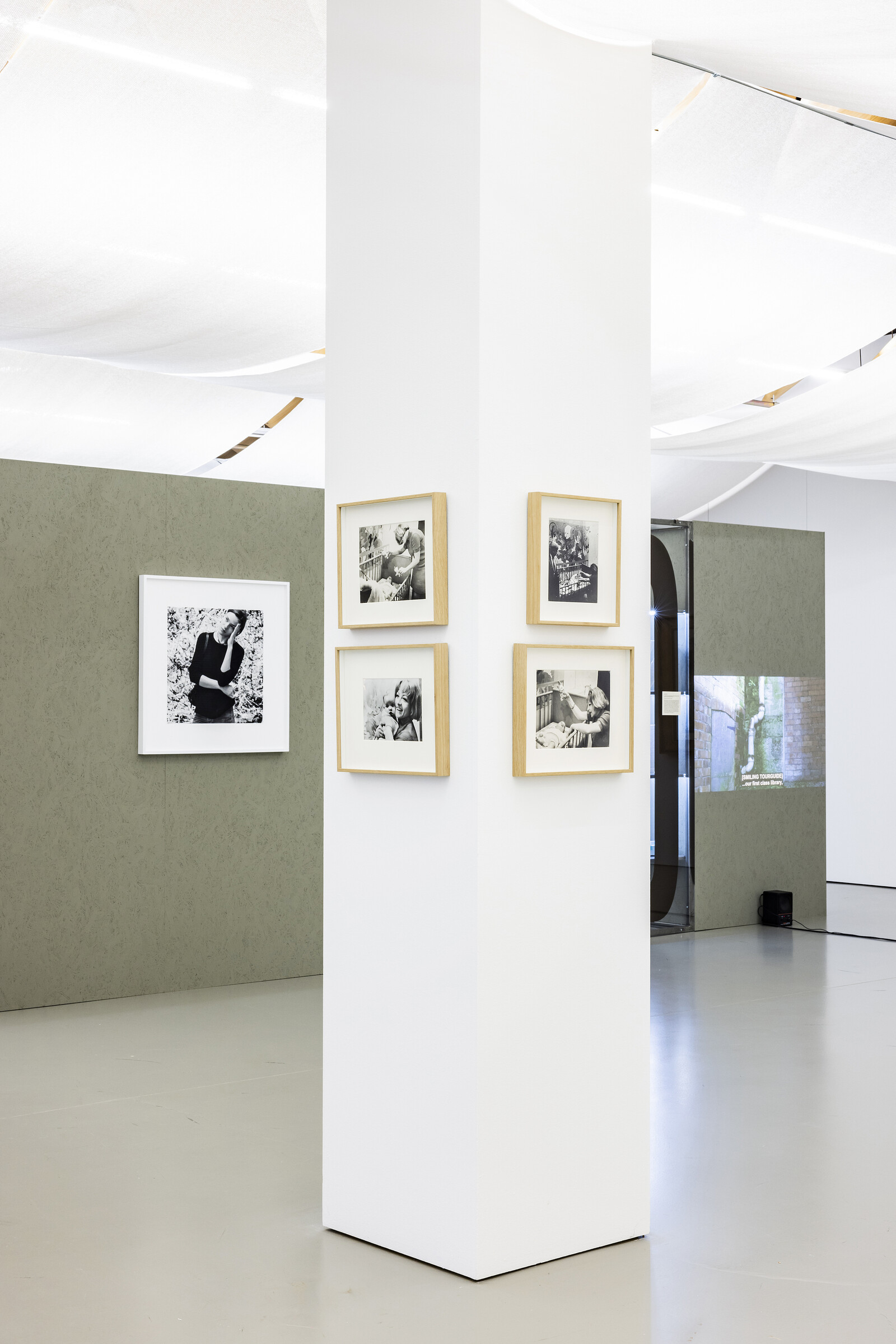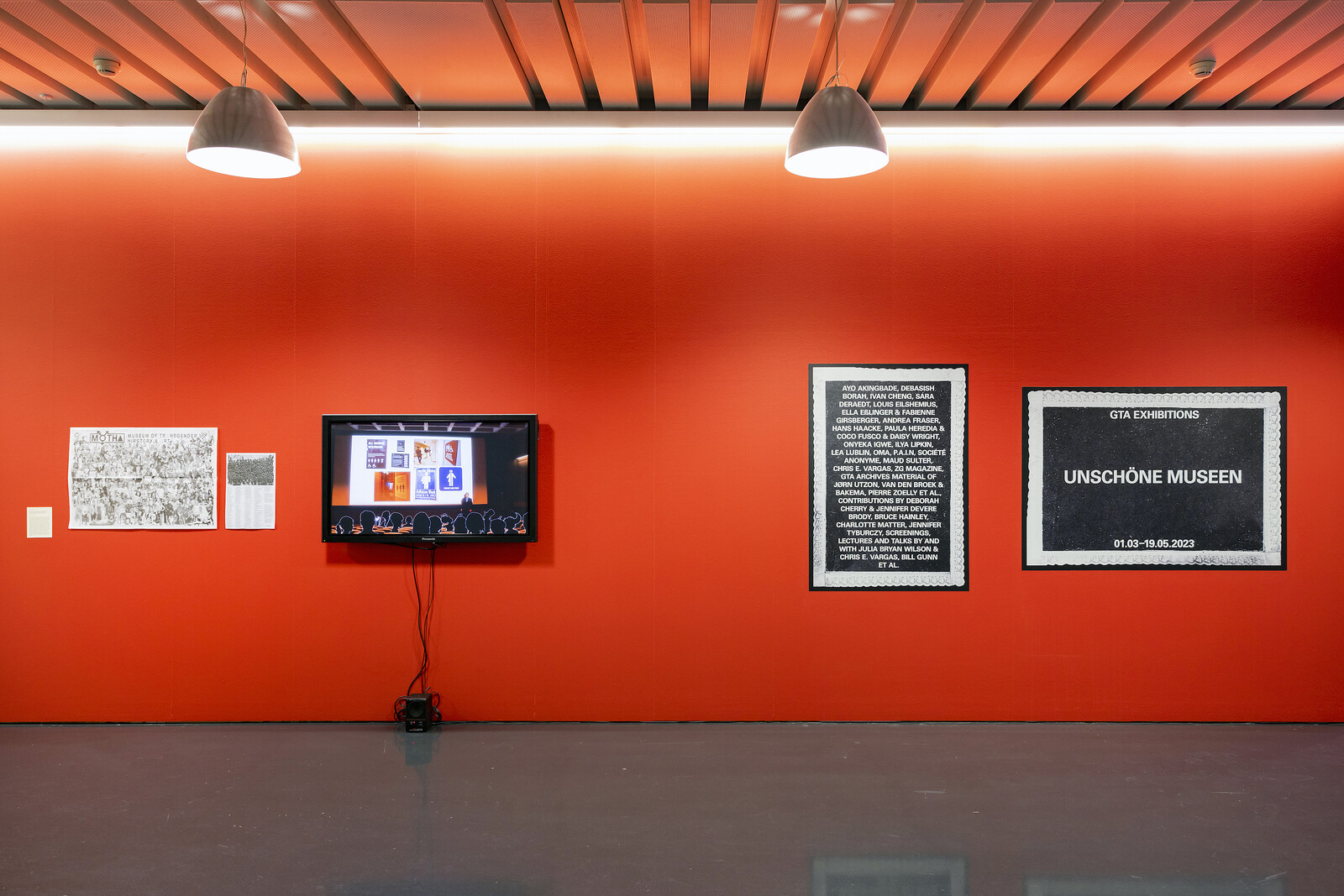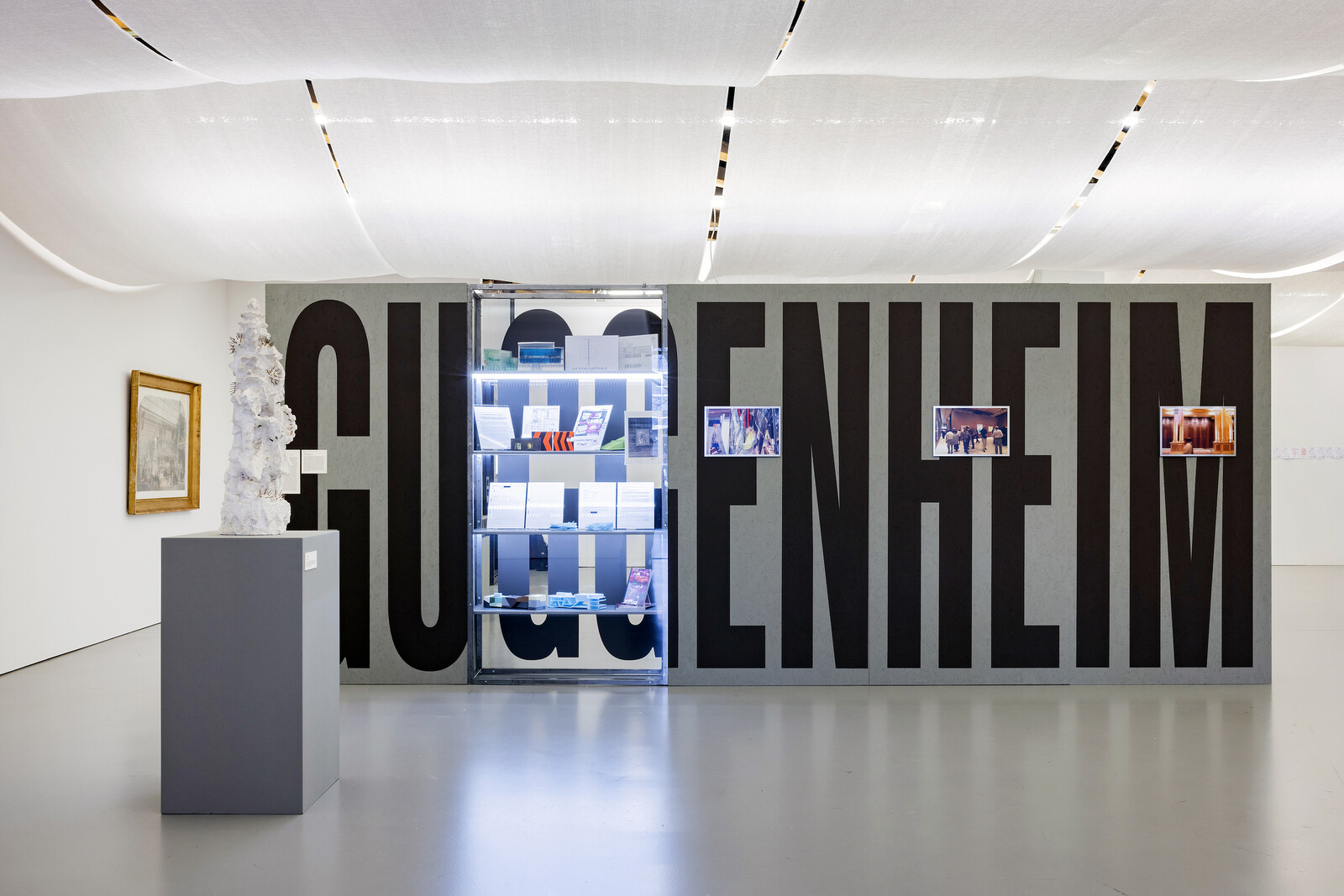One institution considers another: in a pugilistic text that frames the dense exhibition “Unschöne Museen” [Unbeautiful Museums] at gta exhibitions—part of the ETH Zürich’s architecture department—curators Fredi Fischli, Niels Olsen and Geraldine Tedder mention that recent events at the Kunsthaus Zürich catalyzed this show. The latter behemoth is currently addressing questions of provenance and funding after unflattering investigations into its relationship with donor Emil Georg Bührle. In 2021 the Bührle collection, on long-term loan, went on show in a purpose-built Chipperfield-designed extension to the Kunsthaus. Bührle, who died in 1956, became rich selling arms to Germany under the Nazis; his businesses later cooperated with the government of South Africa under Apartheid. The Kunsthaus’s gestures towards openness in this regard—such as commissioning ongoing additional research on the provenance of works in the Bührle collection—feel overdue.
Nonetheless, it’s staggering for anyone who arrived in Switzerland this millennium that Hans Haacke exhibited Buhrlesque at Kunsthalle Bern back in 1985. Recreated at gta, two shoes made by Bally (a Bührle subsidiary) double as candle-holders on an altar decorated with other Bührle references—all venerating a framed issue of Paratus magazine (the official periodical of the South African Defense Force) celebrating a South African military visit to Switzerland. Like the P.A.I.N. collective, represented nearby with a long string of the risograph-printed Prescription Slip / Guggenheim Action (2019), which implicates the Sackler family in the opioid crisis, Haacke’s work is another example of museums’ historical capacity not only to turn a blind eye, but to absorb and nullify criticism, especially when it comes to funding.
This is a key point for Bénédicte Savoy, who coined the phrase “unbeautiful museums” in conversation with the show’s curators. The museum construct has been fashioned over time to make and maintain various societal inequalities, myopic narratives, and the cruelty of authority. One is reminded of Dan Hick’s book The Brutish Museums (2020), which details how museums have exhibited the spoils of the colonial “Small Wars” of the late nineteenth century into the twentieth, embedding fallacious notions of ethnic hierarchies and cultural Eurocentrism. At gta, there is chilling parody of this institutional ability to render appalling things palatable. Paula Heredia, Coco Fusco, and Daisy Wright’s video The Couple in the Cage (1993) documents Fusco and Guillermo Gómez-Peña’s performance staged at several museums. The two were presented as recently discovered indigenous human specimens and exhibited in a manner akin to carnival animals, performing absurd and demeaning tricks for their audience.
But artists have long promoted alternative models. In Mon fils (1968), Lea Lubin brought her son into the gallery, staking a claim to space there for children and motherhood. And there is kick-back: in recent video and lenticular print works, Onyeka Igwe sounds out the empty carapaces of archives—such as the former Nigerian Film Unit building in Lagos and Oxford’s Pitt Rivers Museum—that cataloged the British Empire, while Debasish Borah creates a display for the culturally important tradition of neighborhood portrait studios in India. Chris E. Vargas appoints himself Executive Director of his own Museum of Transgender Hirstory & Art and outlines its scope: two of several short 2014 video addresses are presented here.
Items from the archive of ETH Zürich’s architecture department demonstrate how some local museum buildings emerged, and provide fragmented insights into their social and political landscapes. Alongside architectural models for ambitious, and abandoned, redevelopments are extraordinary documents revealing how Rem Koolhaas’s architectural office, OMA, discussed Friedrich Christian Flick’s planned private Zürich museum around 2000. During that period, Flick was being pressurized to compensate those who were forced to work for his family’s businesses during the Nazi era. While the ambivalence expressed in minutes from a conversation between Petra Blaisse, Chris Dercon, Jeffrey Inaba, Koolhaas, and Hans Ulrich Obrist stems mostly from their distaste at Flick’s approach to collecting, public and media attention can also pressurize architects, like cultural managers, into behaving more ethically. Ultimately, the people of Zürich rejected Flick’s museum in a referendum and he took his collection to Berlin.
Perched on a hill overlooking Zürich, gta exhibitions enjoys significant independence. The critical stance taken by the curators reflects this position: not having to fundraise or depend upon maintaining high visitor numbers allows them to attack other institutions without risking their own. “Unschöne Museen” has stimulated worthwhile debate locally, though the emphasis across the many works exhibited is on undoing, deconstruction, disruption, and revelation. It offers few novel alternatives to the museum as site of exhibition and preservation—a remit that by now has been extended even by the International Council of Museums. In the curators’ defense, however, the show leans into the peculiarities of their own institute, embedded as it is within an academic space. Several works are by students or recent graduates, and the tone is Thunbergian in its youthful self-righteousness—much of it justified.
The work that engages most is Ivan Cheng’s rough-at-the-edges, pushy and chaotic 27-minute video Pride and Prejudice (2023). In several parallel, multifaceted monologues and dialogues, Cheng and a clutch of students traverse, dance, and skate through modernist and classical ETH sites. Subjects discussed include spats between beauty influencers, the status of skating, and the enterprise of staging Aristophanes’s Peace (421 BCE) anew. It cycles through questions of hierarchy, ritual, exploitation, selection, preservation, and allegiances, with emotional subtexts like the appeal of the familiar and managing dictatorial direction. Flawed and disingenuous museums may be, but there’s still a spark when the past and the present abrade, and museums are one place where it can catch fire.


